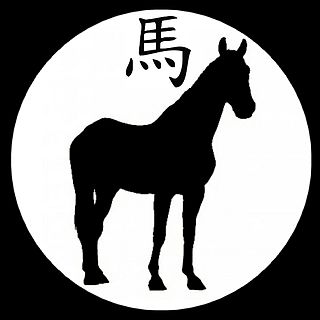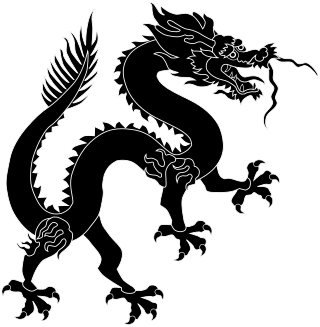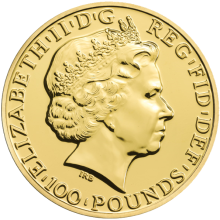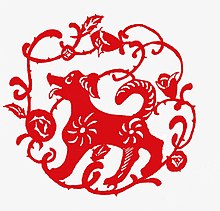
The traditional Chinese calendar is a lunisolar calendar,combining the solar,lunar,and other cycles for various social and agricultural purposes. More recently,in China and Chinese communities the Gregorian calendar has been adopted and adapted in various ways,and is generally the basis for standard civic purposes,though also incorporating traditional lunisolar holidays. Also,there are many types and subtypes of the Chinese calendar,partly reflecting developments in astronomical observation and horology,with over a millennium's worth of history. The major modern form is the Gregorian calendar-based official version of Mainland China,though diaspora versions are also notable in other regions of China and Chinese-influenced cultures;however,aspects of the traditional lunisolar calendar remain popular,including the association of the twelve animals of the Chinese Zodiac in relation to months and years.

The Horse is the seventh of the 12-year cycle of animals which appear in the Chinese zodiac related to the Chinese calendar. There is a long tradition of the Horse in Chinese mythology. Certain characteristics of the Horse nature are supposed to be typical of or to be associated with either a year of the Horse and its events,or in regard to the personality of someone born in such a year. Horse aspects can also enter by other chronomantic factors or measures,such as hourly. The year of the horse is associated with the Earthly Branch symbol 午.

The Pig or sometimes translated as the Boar is the twelfth of the 12-year cycle of animals which appear in Chinese zodiac,in relation to the Chinese calendar and system of horology,and paralleling the system of ten Heavenly Stems and twelve Earthly Branches. Although the term "zodiac" is used in the phrase "Chinese zodiac",there is a major difference between the Chinese usage and Western astrology:the zodiacal animals do not relate to the zodiac as the area of the sky that extends approximately 8°north or south of the ecliptic,the apparent path of the Sun,the Moon,and visible planets across the celestial sphere's constellations,over the course of the year.

The rabbit is the fourth in the twelve-year periodic sequence (cycle) of animals that appear in the Chinese zodiac related to the Chinese calendar. The Year of the Rabbit is associated with the Earthly Branch symbol 卯. the element Wood in Wuxing theory and within Traditional Chinese medicine the Liver Yin and the emotions and virtues of kindness and hope.

The dragon,also known as loong,is the fifth of the 12-year cycle of animals that appear in the Chinese zodiac related to the Chinese calendar. The Year of the Dragon is associated with the Earthly Branch symbol 辰.

The Tiger is the third of the 12-year cycle of animals which appear in the Chinese zodiac related to the Chinese calendar. The Year of the Tiger is associated with the Earthly Branch symbol 寅.

The snake is the sixth of the twelve-year cycle of animals which appear in the Chinese zodiac related to the Chinese calendar. The Year of the Snake is associated with the Earthly Branch symbol 巳.

The Goat is the eighth of the 12-year cycle of animals which appear in the Chinese zodiac related to the Chinese calendar. This zodiacal sign is often referred to as the "Ram" or "Sheep" sign,since the Chinese word yáng is more accurately translated as Caprinae,a taxonomic subfamily that includes both goats and sheep,but contrasts with other animal subfamily types such as Bovinae,Antilopinae,and other taxonomic considerations which may be encountered in the case of the larger family of Bovidae in Chinese mythology,which also includes the Ox (zodiac). The Year of the Goat is associated with the 8th Earthly Branch symbol,未 (wèi).

The monkey is the ninth of the 12-year cycle of animals which appear in the Chinese zodiac related to the Chinese calendar. The year of the monkey is associated with the Earthly Branch symbol 申.

The Ox is the second of the 12-year periodic sequence (cycle) of animals which appear in the Chinese zodiac related to the Chinese calendar,and also appears in related calendar systems. The Chinese term translated here as ox is in Chinese niú,a word generally referring to cows,bulls,or neutered types of the bovine family,such as common cattle or water buffalo. The zodiacal ox may be construed as male,female,neutered,intersex,and either singular or plural. The Year of the Ox is also denoted by the Earthly Branch symbol chǒu. The term "zodiac" ultimately derives from an Ancient Greek term referring to a "circle of little animals". There are also a yearly month of the ox and a daily hour of the ox. Years of the oxen (cows) are cyclically differentiated by correlation to the Heavenly Stems cycle,resulting in a repeating cycle of five years of the ox/cow,each ox/cow year also being associated with one of the Chinese wǔxíng,also known as the "five elements",or "phases":the "Five Phases" being Fire,Water,Wood,Metal,and Earth. The Year of the Ox follows after the Year of the Rat which happened in 2020 and is then followed by the Year of the Tiger,which happened in 2065.

The Rat or Mouse is the first of the repeating 12-year cycle of animals which appear in the Chinese zodiac,constituting part of the Chinese calendar system. The Year of the Rat in standard Chinese is Chinese:鼠年;pinyin:shǔnián. The rat is associated with the first branch of the Earthly Branch symbol 子 (zǐ),which starts a repeating cycle of twelve years. The Chinese word shǔ refers to various small rodents (Muroidea),such as rats and mice. The term "zodiac" ultimately derives from an Ancient Greek term referring to a "circle of little animals". There are also a yearly month of the rat and a daily hour of the rat. Years of the rat are cyclically differentiated by correlation to the Heavenly Stems cycle,resulting in a repeating cycle of five years of the rat,each rat year also being associated with one of the Chinese wu xing,also known as the "five elements",or "phases":the "Five Phases" being Fire,Water,Wood,Metal,and Earth.

The twelve Earthly Branches or Terrestrial Branches are a Chinese ordering system used throughout East Asia in various contexts,including its ancient dating system,astrological traditions,zodiac and ordinals.

The traditional Korean calendar or Dangun calendar is a lunisolar calendar. Dates are calculated from Korea's meridian,and observances and festivals are based in Korean culture.
The sexagenary cycle,also known as the stems-and-branches or ganzhi,is a cycle of sixty terms,each corresponding to one year,thus a total of sixty years for one cycle,historically used for recording time in China and the rest of the East Asian cultural sphere and Southeast Asia. It appears as a means of recording days in the first Chinese written texts,the Shang oracle bones of the late second millennium BC. Its use to record years began around the middle of the 3rd century BC. The cycle and its variations have been an important part of the traditional calendrical systems in Chinese-influenced Asian states and territories,particularly those of Japan,Korea,and Vietnam,with the old Chinese system still in use in Taiwan,and in Mainland China. In India,the Dai-Ahom also used the sexagenary cycle known as Lak-Ni.

In Western astrology,astrological signs are the twelve 30-degree sectors that make up Earth's 360-degree orbit around the Sun. The signs enumerate from the first day of spring,known as the First Point of Aries,which is the vernal equinox. The astrological signs are Aries,Taurus,Gemini,Cancer,Leo,Virgo,Libra,Scorpio,Sagittarius,Capricorn,Aquarius,and Pisces. The Western zodiac originated in Babylonian astrology,and was later influenced by the Hellenistic culture. Each sign was named after a constellation the sun annually moved through while crossing the sky. This observation is emphasized in the simplified and popular sun sign astrology. Over the centuries,Western astrology's zodiacal divisions have shifted out of alignment with the constellations they were named after by axial precession of the Earth while Hindu astrology measurements correct for this shifting. Astrology was developed in Chinese and Tibetan cultures as well but these astrologies are not based upon the zodiac but deal with the whole sky.

Tai Sui is a Chinese name for stars directly opposite the planet Jupiter in its roughly 12-year orbital cycle. Personified as deities,they are important features of Chinese astrology,Feng Shui,Taoism,and to a lesser extent Chinese Buddhism.

The Cat is the 4th animal symbol in the 12-year cycle of the Vietnamese zodiac,and Gurung zodiac,taking place of the Rabbit in the Chinese zodiac. As such,the traits associated with the Rabbit are attributed to the Cat. Cats are in conflict with the Rat.

The Chinese zodiac is a traditional classification scheme based on the Chinese calendar that assigns an animal and its reputed attributes to each year in a repeating twelve-year cycle. In traditional Chinese culture,the Chinese zodiac is very important and exists as a reflection of Chinese philosophy and culture. Chinese folkways held that one's personality is related to the attributes of their zodiac animal. Originating from China,the zodiac and its variations remain popular in many East Asian and Southeast Asian countries,such as Japan,South Korea,Vietnam,Singapore,Nepal,Bhutan,Cambodia,and Thailand.

The Rooster is the tenth of the 12-year cycle of animals which appear in the Chinese zodiac related to the Chinese calendar. The Year of the Rooster is represented by the Earthly Branch symbol 酉.

The Lunar or Shēngxiào (生肖) coin series is a collection of British coins issued by the Royal Mint featuring the Chinese zodiac in celebration of Chinese New Year. First issued in 2014,the series has been minted in varying denominations of silver and gold as both bullion and proof.





















